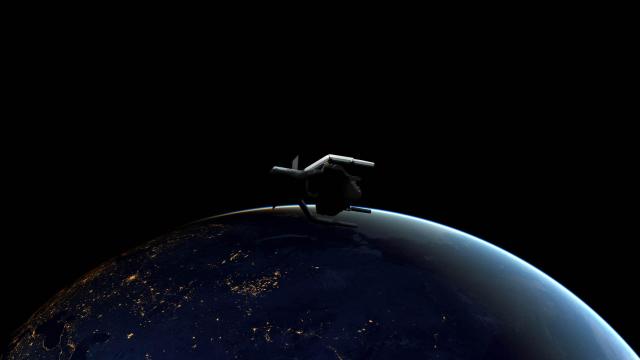The European Space Agency has commissioned the first-ever mission to remove a single piece of space debris from orbit.
Humans put so many satellites into low Earth orbit that the space around us is now littered with junk. Much of this debris breaks up in collisions with other pieces of debris, resulting in over 120 million tiny objects (plus tens of thousands of larger pieces) whizzing around Earth at velocities up to 17,500 miles per hour (28,000 kilometres per hour). This debris can be hazardous to active satellites and space missions and can pollute astronomers’ view of the sky. The new mission will launch in 2025 and aims to demonstrate that humans have the ability to remove space debris from orbit.
The ESA’s Ministerial Council agreed to a contract for the mission at the Space19+ meeting last month, according to a press release from the ESA. They selected a Swiss startup called ClearSpace, founded by researchers at Ecole Polytechnique Fédérale de Lausanne, to helm it. The mission features a spacecraft, ClearSpace-1, which will first launch to 500 kilometres above Earth’s surface for testing. Then, spacecraft operators will raise the ship to a higher orbit and use four robotic arms to grab onto the 100-kilogram Vespa upper stage that the ESA left in orbit in 2013. The craft, clutching the debris, will then slow itself down in order to deorbit and burn up in the atmosphere.
One single piece of debris obviously does not make a dent in the problem. But the ClearSpace-1 mission hopes to show that the technology works before moving on to more difficult targets or multiple objects at a time.
Space debris becomes a worse problem with each additional object that humans launch into space. One 1978 paper theorises that each collision between pieces of debris increases the probability of further collisions, creating a cascade that eventually leads to a ring of space junk around the planet.
ClearSpace-1 follows on the heels of the RemoveDEBRIS experiment, which recently used a harpoon to latch onto a 10-centimeter (4-inch) simulated space junk target it brought into space itself. That mission’s testing will end in March, when it will release a sail to slow itself into deorbiting.
Human impacts on the low-Earth environment is clear, from space debris to countless communications satellites that can even interfere with astronomy. These kinds of missions are a step toward a fix—but the longer we wait to act, the worse the problem will get.
